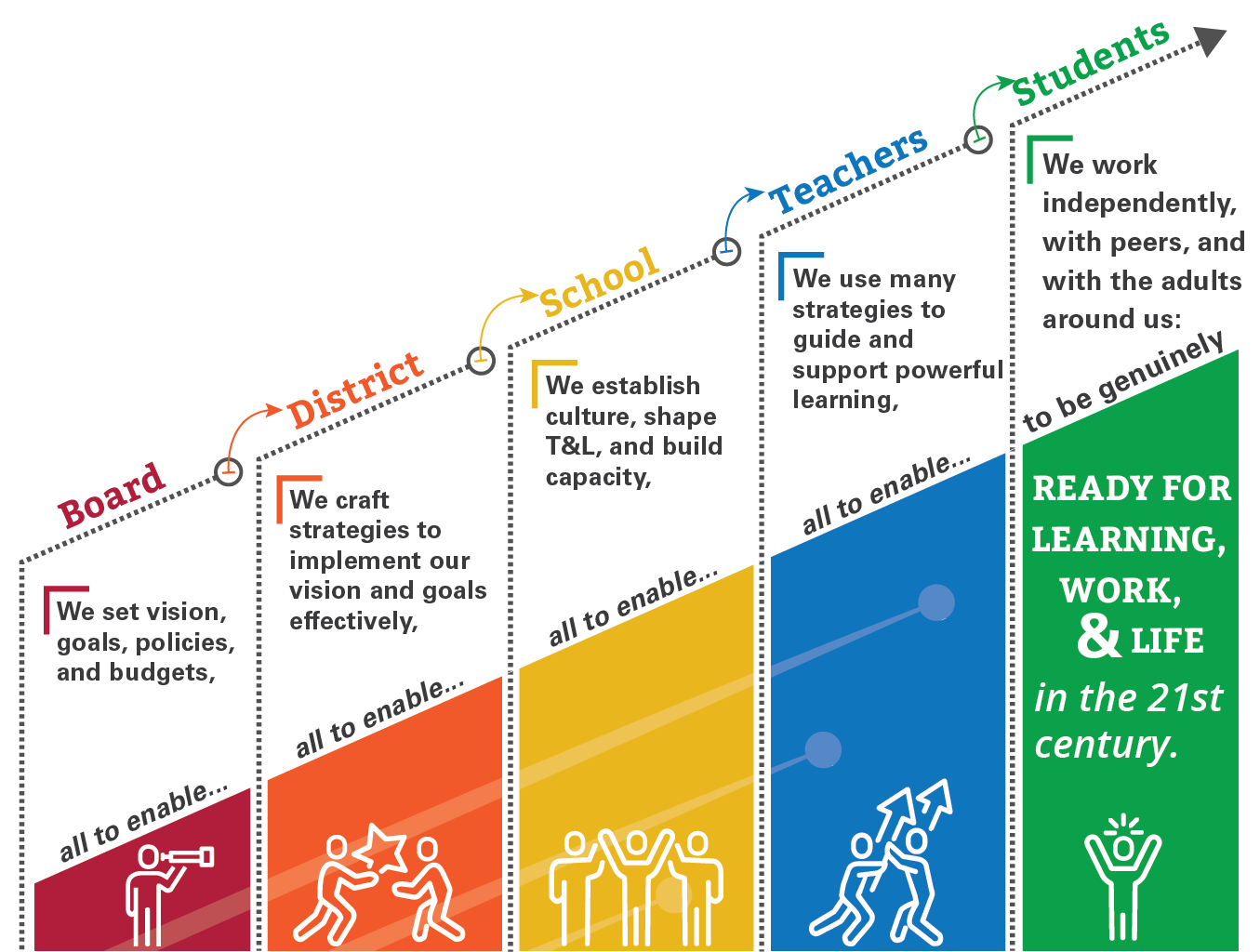Prepared Project Catalyzer 4
Activate Your “Stairway of Enabling”

Educators call it “distributed leadership.” Policymakers call it “site-based decision-making.” We all call it “student-centered” or “student-driven” learning at the most important level of all. It should be your organization-wide operating norm—at every level.
It’s all rooted in the same principle, which is rooted in extensive behavioral science. As Daniel Pink puts it in his book, Drive:
When it comes to motivation, there’s a gap between what science knows and what business does. Our current business operating system—which is built around external, carrot-and-stick motivators—doesn’t work and often does harm. We need an upgrade. And the science shows the way. This new approach has three essential elements: 1. Autonomy—the desire to direct our own lives. 2. Mastery—the urge to get better and better at something that matters. 3. Purpose—the yearning to do what we do in the service of something larger than ourselves.
Though they wouldn’t claim that they perfected it, many of the participating Prepared project schools and districts have sought to make this line of thinking a central operating principle. Their stories prompted the vision of a “stairway of enabling.”
The Stairway of Enabling

Each level defines its job as empowering and enabling those at the next level to do the best work they can possibly do. Credit: NGLC
The stairway of enabling approach is central to the main finding from the Prepared research: Participating schools and districts are striving to mirror their agentic, enabling learning model in the ways they operate organizationally. Students won’t genuinely practice and develop self-direction and agency, they say, in learning environments that run on mandates and compliance.
Use this activity to create the conditions in your school or district that support empowered and enabling structures and relationships.
 The Goal
The Goal
Explore how your school, CMO, or district can be the change you envision for the students you serve.
 How
How
- Get started: Form a core team. Start off with a shared reading of the research basis for Transformation Design—the practice of catalyzing change in schools that is deeply align with an agentic, 21st-century vision of student success. Consider adding additional shared readings from Devin Vodicka, former superintendent in Vista Unified (a Prepared project participant): How Learner Agency Impacts a Learning Ecosystem (blog post) and Learner-Centered Leadership (book).
- Explore your community’s readiness: With the core team, probe your organizational readiness and context for fundamental change with the Transformation Design District Self-Assessment. This tool can work for schools and CMOs as well as districts. Alternatively, design and conduct your own informal survey of stakeholders at each level in the stairway of enabling graphic based on these questions: How would you characterize your relationship with the organizational levels you interact with the most? How do you listen to those in the level right next to you to know what they need to do their best, most innovative work? In what ways is your relationship with people in that next level productive, positive, and enabling? What changes can you make to support greater ownership and self-direction at that next level?
- Take the “skunkworks” approach: If reimagining the dynamic relations across your organization seems daunting, read John Kotter’s Accelerate article. It suggests that organizations set up a separate operating system (with entirely different dynamics and operating norms) to catalyze fundamental change, leaving the original system in place to make sure kids are served and everything is running on time. Read in the article how schools and colleges have made use of Kotter’s 8-step model for leading change, and work with your core team to pilot test this separate operating system.
- Join the movement forming around emancipatory organizational design: Most district organizational hierarchies reflect a pattern of structured behavior that puts the “bosses” in direct, supervisory charge of the “workers”—at the top of the hierarchy (superintendent to principals) and at the bottom (teachers to students). Many of the Prepared project districts and schools are seeking to reverse this top-down pattern, or at least make stewardship of the work at each level a more equitable, shared responsibility. Read Deeper Learning Dozen Co-Director John Watkins' article for more on what “emancipatory” organizational design looks like. And ask your core team if this the right time for your district to join one of a number of initiatives helping districts move in these directions: BELE Network, AASA’s Learning 2025, and NGLC’s Bravely, launching later this year.
Discover more Prepared project activities to catalyze your transformation journey.
RETURN TO “USE THIS NOW!”
Photo at top by Allison Shelley for EDUimages, CC BY-NC-4.0
